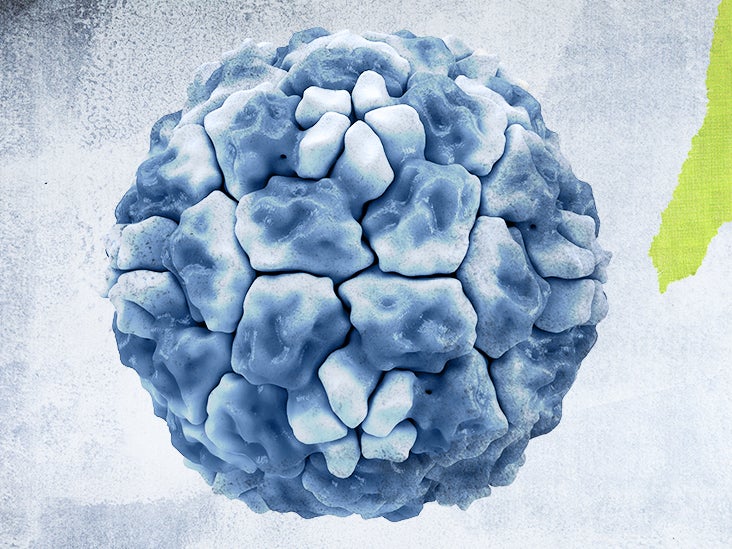
[ad_1]

- A lab study has found that a virus that causes the common cold can trigger an innate immune response against SARS-CoV-2, the virus that causes COVID-19.
- In theory, infections with the common cold virus could inhibit the transmission of SARS-CoV-2 among members of a population and reduce the severity of infections.
- Further research could lead to control strategies or treatments that exploit these interactions between viruses.
Scientists have searched for a cure for the common cold for decades, with little success.
However, recent research suggests that this troublesome infection – although generally mild – may be a hidden ally in the fight against pandemic viruses such as influenza and SARS-CoV-2.
Human rhinoviruses (HRVs), which cause more than half of all colds, are the most common respiratory viruses in humans.
Experts believe that HRVs did this by causing human cells to produce interferon, which is part of the body’s innate immune defenses against viral infections.
Research has shown that SARS-CoV-2 is
The discovery led scientists at the MRC-University of Glasgow Center for Virus Research in the UK to question whether HRVs could help fight the spread of SARS-CoV-2 and limit the severity of infections.
To find out, the researchers infected cultures of human respiratory cells in the lab with SARS-CoV-2, an HRV, or both viruses at the same time.
The cultures closely mimicked the outer layer of cells, called the epithelium, which lines the airways of the lungs.
SARS-CoV-2 steadily multiplied in cells the team had infected with this virus alone. However, in cells also infected with HRV, the number of SARS-CoV-2 virus particles decreased rapidly until they were undetectable only 48 hours after the initial infection.
In other experiments, scientists found that HRV suppressed the replication of SARS-CoV-2, regardless of which virus infected the cells first.
Conversely, SARS-CoV-2 had no effect on the growth of HRV.
To test their intuition that HRV inhibited SARS-CoV-2 by triggering the cells’ innate immune response, the researchers repeated their experiments in the presence of a molecule that blocks the effects of interferon.
Effectively, the molecule restored the ability of SARS-CoV-2 to replicate in cells infected with HRV.
“Our research shows that the human rhinovirus triggers an innate immune response in human respiratory epithelial cells, which blocks the replication of the COVID-19 virus, SARS-CoV-2,” says lead author Professor Pablo Murcia.
“This means that the immune response caused by mild and common cold virus infections could provide some transient level of protection against SARS-CoV-2, potentially blocking the transmission of SARS-CoV-2 and reducing the severity of the disease. COVID-19, ”said Prof. Murcia adds.
The researchers used a mathematical simulation to predict how different numbers of HRV infections of different lengths might affect the spread of SARS-CoV-2 through a population.
The results showed that the number of new SARS-CoV-2 infections in a population is inversely proportional to the number of HRV infections.
The model predicts that if the cold virus becomes sufficiently prevalent and persistent, it could temporarily prevent the spread of SARS-CoV-2.
“The next step will be to study what happens at the molecular level during these virus-virus interactions to better understand their impact on disease transmission,” explains Professor Murcia.
“We can then use this knowledge to our advantage, hopefully developing COVID-19 infection control strategies and measures,” he adds.
The search appears in The Journal of Infectious Diseases.
In their paper, the researchers hypothesize that mild HRV infections could be mutually beneficial for the virus and its human hosts.
They write that the immune system may have evolved to allow HRV to replicate and spread to new hosts. In turn, the virus keeps more serious and potentially fatal viral infections at bay.
At the Science Media Center in London, UK, other scientists have welcomed the research, but pointed out some potential limitations.
Gary McLean, who is professor of molecular immunology at London Metropolitan University in the UK, said the main limitation was that the study involved only one of 160 or more possible strains of rhinovirus.
He said there was no guarantee that each strain would have the same effect on SARS-CoV-2 infections.
He added that translating the results of a lab experiment into real life is “very tricky,” saying:
“While it is likely that a common cold virus, such as rhinovirus, induces a strong innate immune response that could block SARS-CoV-2 infections, both infections would still need to occur. at the same time.”
In addition, he pointed out that intensive infection control measures over the past year have made the common cold less common, reducing the potential for innate immunity triggered by HRV to fight the spread of SARS-CoV- 2.
For live updates on the latest developments regarding the novel coronavirus and COVID-19, click here.
[ad_2]
Source link